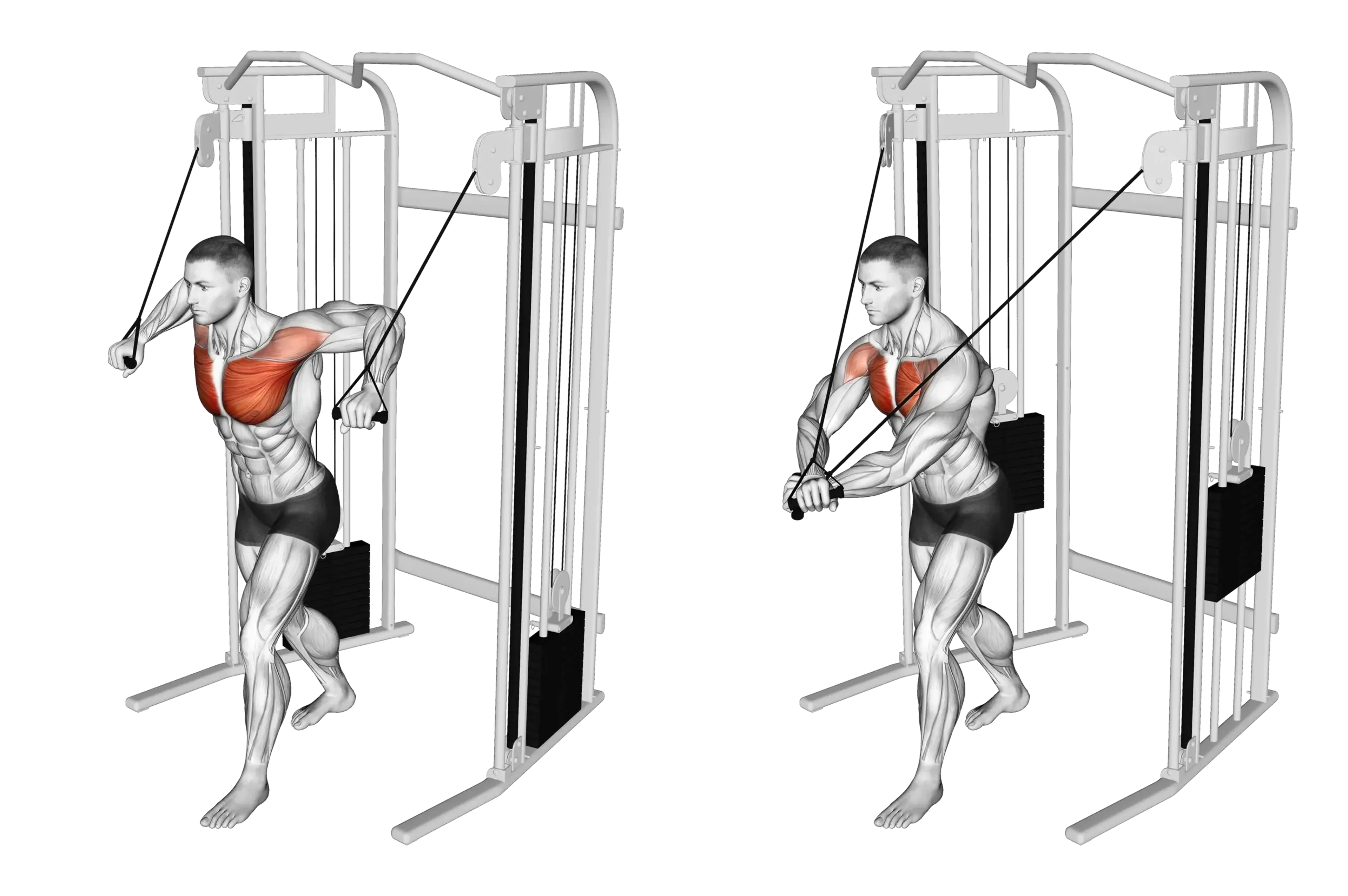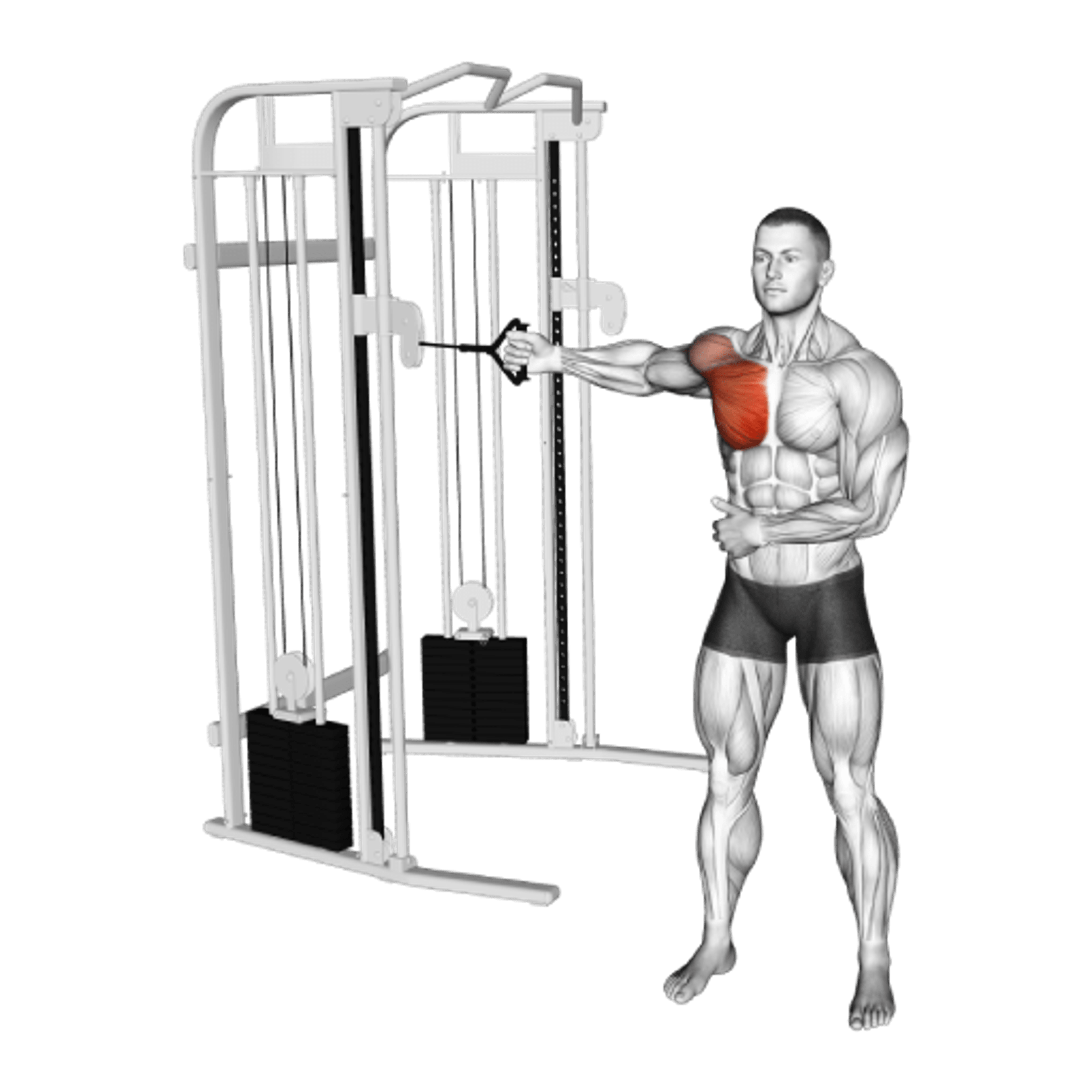Cable Crossover

Overview
- Primary Focus:
- Chest.
- Equipment:
- Cable.
- Difficulty:
- Beginner.
General Information
Chest Isolation Exercise is an isolation exercise that primarily targets the chest (pectoralis major) and secondarily engages the front shoulders (anterior deltoids). It is a beginner-level exercise that allows you to focus on contracting the chest without relying heavily on other muscle groups.
This type of movement is ideal for individuals looking to isolate the chest muscles more precisely than compound pressing exercises. It’s especially useful for beginners learning to feel and activate their chest properly, or for advanced lifters as a finishing movement to maximize hypertrophy.
Typically performed with cables, machines, or dumbbells, chest isolation exercises emphasize a controlled range of motion and consistent muscle tension. They can be easily modified in terms of angles and resistance, making them highly accessible and effective for various fitness levels.
Muscles Worked
- Pectoralis Major
- Primary
- Deltoid
- High
- Rectus Abdominis
- Low
- Serratus Anterior
- Low
Instructions
- Set up the equipment (machine, bench, or cable) according to your chosen variation.
- Adjust the seat or bench height so the handles or weights align with mid-chest level.
- Grab the handles or dumbbells with a neutral or overhand grip, keeping elbows slightly bent.
- Brace your core, and press or fly the weight forward in a slow and controlled motion.
- Squeeze your chest muscles at the top of the movement.
- Slowly return to the starting position without letting the weights rest or pull you back suddenly.
- Repeat for the desired number of repetitions, maintaining proper form throughout.
Common Mistakes
Injuries
Chest Isolation Exercise is considered a low to medium risk movement when performed correctly with appropriate resistance and control.
Strain on the shoulders or rotator cuff can occur if the arms extend too far back or the load is too heavy. To avoid this, maintain a slight bend in the elbows and avoid overstretching at the bottom of the range.
Wrist and elbow discomfort may result from poor grip mechanics or jerky movements. Use a smooth tempo and keep your joints aligned with the direction of resistance.
Ensure a thorough warm-up before starting and avoid using momentum to swing the weight—this keeps tension on the chest and reduces injury risk.
Alternative Exercises

Frequently Asked Questions
- Q: Can I do this exercise with dumbbells instead of a machine?
Yes, many chest isolation movements can be performed with dumbbells, cables, or machines depending on preference and equipment.
- Q: How often should I include isolation chest exercises?
1-2 times per week is sufficient, typically after your main pressing lifts.
- Q: Is this exercise suitable for beginners with shoulder issues?
Yes, but start with light weight and limited range of motion. If pain persists, consult a healthcare professional.
Overview
- Primary Focus:
- Chest.
- Equipment:
- Cable.
- Difficulty:
- Beginner.




